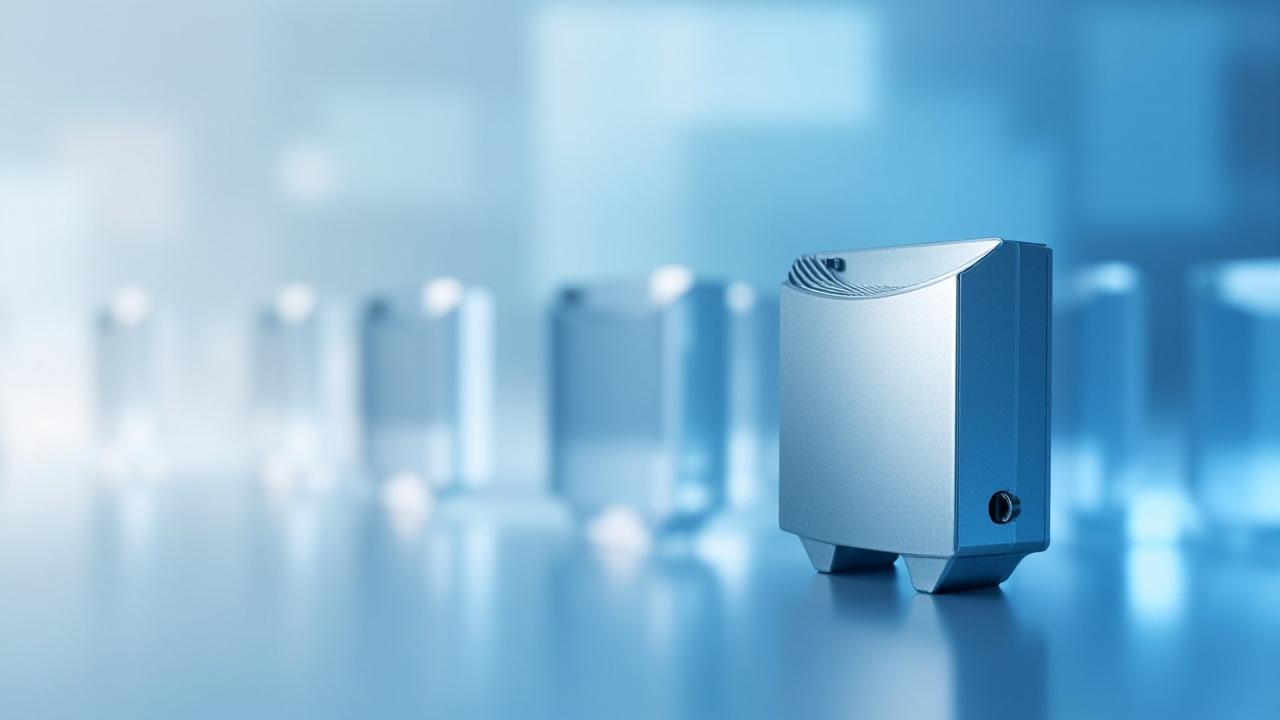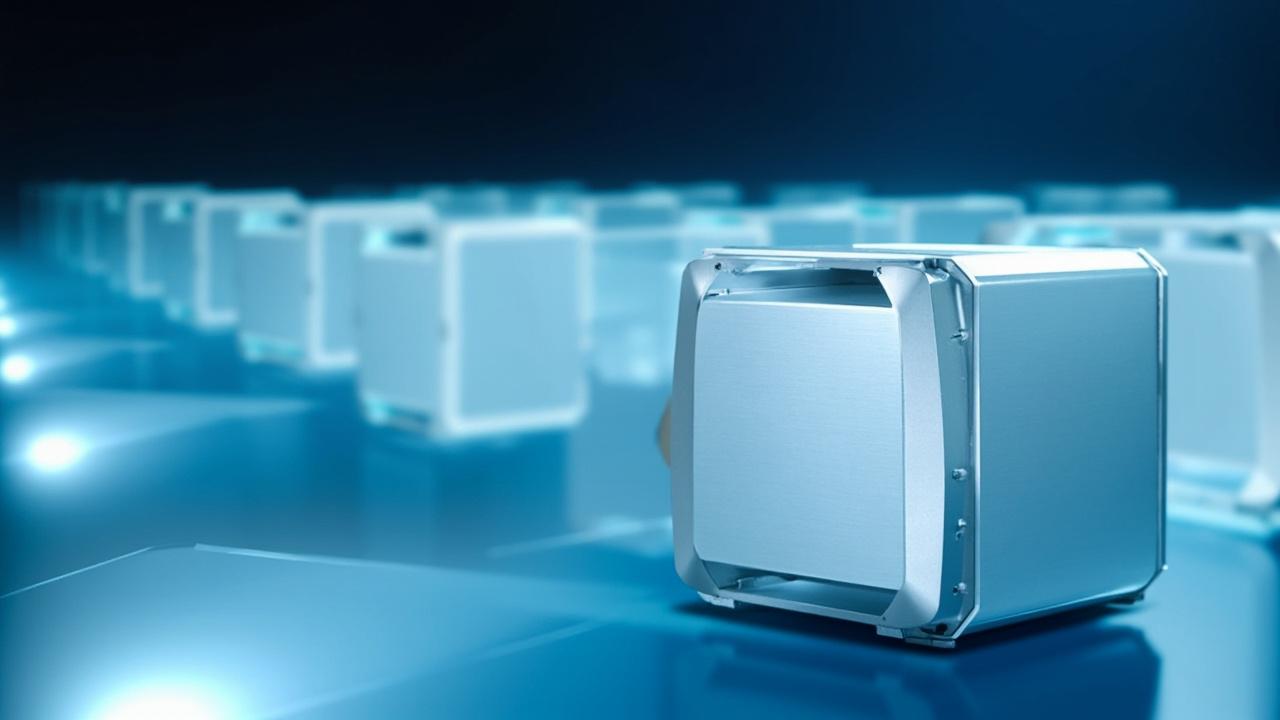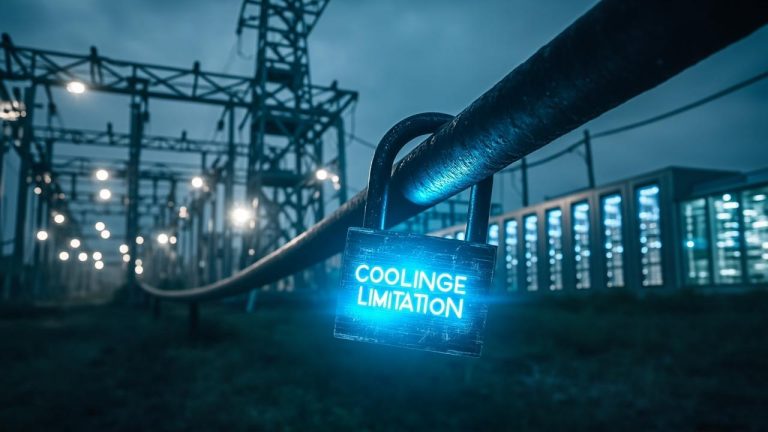Introduction
Compute density is exploding, and with it, the heat generated within data centers. *CDU scalability* is now paramount. As IT infrastructure continues to pack more processing power into smaller spaces, the demands placed on cooling systems are reaching unprecedented levels. We’re talking about a shift towards megawatt-scale deployments, and that requires a fundamental rethink of how we manage thermal loads. The traditional approach simply won’t cut it anymore.
Insufficient cooling poses a significant threat to data center operations. Downtime caused by overheating can cripple businesses, while performance degradation due to thermal throttling can negatively impact application performance. Furthermore, inadequate cooling accelerates hardware failure, leading to costly replacements and disruptions. The stakes are high, and a reactive approach to cooling is no longer a viable strategy.
To navigate this rapidly evolving landscape, a proactive approach to coolant distribution is essential. Planning for megawatt growth requires a comprehensive understanding of your current and future cooling needs, and a strategic approach to selecting and deploying the right cooling technologies.
This blog post will guide you through the key considerations for planning your coolant distribution infrastructure, ensuring reliable and efficient data center operations as your compute demands continue to rise. We’ll explore topics like assessing your cooling needs, comparing different cooling architectures, choosing the right coolant distribution units, designing the coolant piping network, and implementing robust monitoring and management systems.
Understanding Your Current and Projected Cooling Needs
The ability to adapt to unforeseen IT demands is a cornerstone of modern data center design, and *cdu scalability* is paramount in achieving this agility. Planning for future expansion requires a modular approach, enabling data centers to increase cooling capacity incrementally. Instead of a massive upfront investment in oversized cooling infrastructure, modular CDUs allow for a “pay-as-you-grow” model.
This approach not only reduces initial capital expenditure but also optimizes operational efficiency by avoiding the energy waste associated with running an underutilized cooling system. Careful consideration of future space requirements, power availability, and the existing piping infrastructure is vital when implementing modular CDUs.
A modular design strategy can be implemented using several methods. Individual cooling units can be added to the system, in line with the data center’s growth trajectory. Some units can be stacked, or placed in parallel to others, for efficient space usage.
Regular assessments should be made, in order to determine if the data center’s cooling system is keeping pace with power demands. Any upgrades to the cooling system should be performed with minimal disruption to the data center’s operations.
Successful implementation of scalable CDUs relies on thorough planning and a clear understanding of future needs. For example, data centers can leverage future expansion by allocating extra space for future equipment or piping, or using adaptable mounting designs. By adopting a scalable approach, data centers can ensure that their cooling infrastructure can meet the demands of tomorrow without sacrificing efficiency or incurring unnecessary costs today.
| Consideration | Details |
|---|---|
| Physical Space | Allocate sufficient space for future CDU modules and related equipment. |
| Power Requirements | Ensure sufficient power capacity and distribution infrastructure to support additional CDUs. |
| Piping Infrastructure | Design the piping network to accommodate future expansion with minimal disruption. |
Coolant Distribution Architectures
Direct-to-chip liquid cooling places the cooling directly on the heat-generating components, offering extremely efficient heat removal. This approach is especially beneficial for high-density deployments where air cooling struggles to keep up. Rear door heat exchangers, on the other hand, capture heat as it exits the server racks. They are less intrusive than direct-to-chip solutions but may not be as effective for the highest power densities.
Immersion cooling involves submerging entire servers in a dielectric fluid. This method provides exceptional cooling capacity and energy efficiency but requires significant infrastructure changes and may raise concerns about maintenance and component compatibility. The choice of architecture hinges on factors such as power density targets, budget constraints, and operational preferences.
Each of these coolant distribution architectures presents its own set of advantages and disadvantages. Direct-to-chip cooling offers the highest cooling performance but can be more complex and costly to implement. Rear door heat exchangers are a more moderate solution, providing a balance between cooling effectiveness and ease of integration.
Immersion cooling delivers the best energy efficiency but demands the most significant upfront investment and infrastructure modifications. It is essential to weigh these factors carefully when selecting the optimal cooling architecture for a megawatt-scale data center. Furthermore, the decision must align with the long-term business goals and operational capabilities of the organization.
When making this decision, consider the following items in your selection process:
Many high-density data centers have successfully implemented these different cooling architectures. For example, some hyperscale data centers are leveraging immersion cooling to achieve unparalleled energy efficiency. Other organizations have opted for direct-to-chip liquid cooling to support the demanding requirements of AI and machine learning workloads. By examining these real-world deployments, data center managers can gain valuable insights into the practical considerations and best practices associated with each cooling architecture.
Selecting the Right Coolant Distribution Units (CDUs)
When selecting Coolant Distribution Units (CDUs), several crucial factors must be considered to ensure optimal performance, reliability, and energy efficiency within your data center. First and foremost, cooling capacity, typically measured in kilowatts (kW), is paramount. The CDU must be capable of removing the heat generated by your IT equipment. Accurately assess your current and projected power density at the rack level to determine the necessary cooling capacity. Next, consider the method of heat rejection.
CDUs can be air-cooled, water-cooled, or chilled water-based. Air-cooled units are simpler to install but may be less efficient, especially in high-density environments. Water-cooled and chilled water units offer superior efficiency but require access to a water source and potentially a chiller plant. Evaluate the trade-offs based on your specific infrastructure and environmental conditions.
Redundancy is another non-negotiable aspect of CDU selection. Data centers cannot afford downtime, and a failure in the cooling system can be catastrophic. Implement redundancy in your CDU configuration, typically in the form of N+1 or 2N redundancy. N+1 redundancy means having one extra CDU than is needed to handle the full load, providing a backup in case one unit fails.
2N redundancy involves having two complete and independent cooling systems, ensuring continuous operation even if one entire system goes offline. The level of redundancy should align with the criticality of your data center operations. You can see the importance of cdu scalability when you look at redundancy.
Energy efficiency is not only environmentally responsible but also economically beneficial. Look for CDUs with features that minimize energy consumption, such as variable-speed pumps and advanced control algorithms. These features can optimize coolant flow based on real-time cooling demand, reducing energy waste.

Pay attention to energy efficiency metrics like Power Usage Effectiveness (PUE), which can be significantly improved with efficient CDUs. Also, consider monitoring and control features as an essential component. Real-time temperature monitoring, flow rate adjustment, and automated alerts are essential for maintaining optimal cooling performance and proactively addressing potential issues.
CDU Scalability
Data centers face a dynamic landscape of evolving IT demands, requiring cooling solutions that can adapt and grow in tandem. Traditional cooling approaches often involve significant upfront investments in oversized infrastructure, leading to wasted capacity and increased operational costs in the short term.
The ability to scale cooling capacity efficiently and cost-effectively is paramount for modern data centers striving to optimize resource utilization and maintain operational agility. This is where the concept of cdu scalability becomes essential, allowing data centers to align their cooling infrastructure with actual IT load, reducing both capital expenditures (CAPEX) and operational expenses (OPEX).
Modular CDU designs offer a compelling solution to this challenge. Unlike monolithic systems, modular CDUs allow data center operators to add cooling capacity incrementally, as needed. This “pay-as-you-grow” approach minimizes upfront investment and avoids the inefficiencies associated with running oversized cooling systems at low utilization rates.
Furthermore, modular designs offer enhanced flexibility in terms of deployment and maintenance. Individual modules can be added, removed, or serviced without disrupting the operation of the entire cooling system, ensuring business continuity and minimizing downtime. This inherent agility enables data centers to respond quickly to changing IT demands and optimize resource allocation.
When planning for future expansion, several key considerations should be addressed. Firstly, data centers must assess the available physical space for accommodating additional CDU modules. This includes not only the footprint of the units themselves but also the space required for maintenance and service access. Secondly, power requirements must be carefully evaluated.
Each new module will add to the overall power consumption of the data center, necessitating upgrades to the electrical infrastructure if insufficient capacity exists. Finally, the piping infrastructure must be designed to accommodate future expansion. This may involve oversizing pipes initially or implementing modular piping systems that can be easily extended as needed.
| Feature | Benefit |
|---|---|
| Modular Design | Pay-as-you-grow approach, reduced upfront investment |
| Scalability | Ability to adapt to changing IT demands |
| Redundancy | Enhanced uptime and business continuity |
Designing the Coolant Piping Network
Material Selection for Optimal Performance
Choosing the right materials for your coolant piping network is paramount to its long-term efficiency and reliability. Copper, stainless steel, and various plastics like PE-RT (Polyethylene Raised Temperature) and PEX (Cross-linked Polyethylene) are common choices, each with its own set of advantages and disadvantages.
Copper offers excellent thermal conductivity and is naturally antimicrobial, but it can be susceptible to corrosion in certain environments and is more expensive. Stainless steel provides superior corrosion resistance and durability but has lower thermal conductivity compared to copper.
Plastics like PE-RT and PEX are lightweight, flexible, and cost-effective, making them easier to install. However, they may have limitations in terms of temperature and pressure ratings. Carefully consider the coolant type, operating temperature, and environmental conditions when making your material selection.
Calculating Flow Rates and Minimizing Pressure Drop
Ensuring adequate coolant flow to all racks is critical for preventing hotspots and maintaining optimal performance. The design of the piping network must account for the total heat load and the required flow rate to dissipate that heat. Calculations must consider the length of the pipe runs, the number of bends and fittings, and the internal diameter of the pipes. A smaller pipe diameter increases flow velocity but also increases pressure drop, requiring more powerful pumps and consuming more energy.
Minimizing bends and using smooth, gradual transitions can significantly reduce pressure drop. Computational Fluid Dynamics (CFD) analysis can be used to model the flow characteristics of the piping network and identify potential bottlenecks or areas of high pressure drop. Proper balancing of the flow across all racks is also essential to ensure that each rack receives the required cooling.
Layout Considerations and Insulation
The physical layout of the coolant piping network can have a significant impact on its performance and maintainability. Aim to minimize the distance between the CDU and the IT equipment to reduce pressure drop and improve efficiency. Arrange the piping to allow for easy access for maintenance and repairs. Consider using a modular design that allows for future expansion without major disruptions.
Adequate insulation is crucial for preventing heat loss and condensation, especially in environments with high humidity. Insulation helps to maintain the coolant temperature, reducing the energy required to maintain the desired cooling levels. Condensation can lead to corrosion and water damage, so proper insulation is essential for protecting the piping network and surrounding equipment. Careful consideration of these factors contributes significantly to cdu scalability and the overall success of megawatt cooling deployments.
Monitoring and Management
Real-time awareness of your coolant distribution system’s performance is paramount for maintaining uptime and preventing costly failures. A robust monitoring and management system provides the visibility and control necessary to optimize cooling efficiency and proactively address potential issues. Without it, even the most advanced cooling infrastructure can be vulnerable to unexpected disruptions.
Implementing a Comprehensive DCIM
Data Center Infrastructure Management (DCIM) software offers a centralized platform for monitoring and managing all aspects of the data center, including the coolant distribution system. This system should track key metrics such as coolant temperature (supply and return), flow rates at various points in the loop, pump speeds, and pressure. Integration with other data center systems, such as power monitoring and environmental sensors, provides a holistic view of the data center’s health.
The DCIM solution should provide trend analysis, capacity planning, and comprehensive reporting. Setting up pre-defined thresholds is key to ensure that the system automatically generates alerts when readings fall outside of acceptable parameters.
Proactive Issue Resolution
Effective monitoring goes beyond simply displaying data. The system should be configured to generate automated alerts and notifications when abnormal conditions are detected. For example, if the coolant temperature exceeds a predefined threshold, an alert should be sent to the relevant personnel, allowing them to investigate the issue and take corrective action before it leads to downtime. These alerts can be sent via email, SMS, or integrated with other incident management systems.

Predictive maintenance leverages data analytics to identify potential issues before they cause a failure. By analyzing trends in coolant temperature, flow rates, and pump performance, the system can detect anomalies that may indicate impending problems, such as a failing pump or a clogged filter. This allows for proactive maintenance and prevents costly downtime. Furthermore, effective data center management includes the need for cdu scalability to handle any cooling performance issues.
Remote Management and Control
Modern cooling systems offer remote monitoring and control capabilities, allowing data center managers to access and manage the system from anywhere. This is particularly useful for geographically distributed data centers or for responding to issues outside of normal business hours. Remote access enables technicians to adjust pump speeds, flow rates, and other parameters to optimize cooling performance or troubleshoot problems.
It also facilitates remote diagnostics, reducing the need for on-site visits. Remote management and control tools should be secured with robust authentication and authorization mechanisms to prevent unauthorized access.
Case Studies
Real-world deployments of advanced cooling solutions in high-density data centers provide invaluable insights for those planning their own megawatt-scale cooling strategies. Studying these deployments allows us to identify common challenges, understand best practices, and quantify the benefits of different approaches.
These case studies can reveal the effectiveness of various cooling architectures, the importance of redundancy, and the impact of efficient monitoring and management systems. Furthermore, they offer concrete examples of how data centers have successfully addressed the increasing demands of high-density computing environments.
Examining these deployments also helps demonstrate the practical application of CDU scalability. A data center experiencing rapid growth might initially deploy a CDU system designed for a specific capacity. As demand increases, the modular design of the CDU allows for the addition of cooling capacity without major disruptions or significant upfront investment.
For example, a colocation provider might start with a base CDU configuration and then add additional modules as new tenants require higher power densities. This approach ensures that the cooling infrastructure can evolve alongside the IT infrastructure, optimizing capital expenditure and minimizing operational risks. This adaptability is critical for maintaining uptime and performance as data centers scale to support next-generation technologies.
The lessons learned from these case studies extend beyond just the selection of hardware. They encompass the entire cooling ecosystem, including design considerations, operational procedures, and maintenance strategies. A common theme is the need for meticulous planning and thorough testing. Data centers that have successfully implemented megawatt-scale cooling solutions often emphasize the importance of thermal modeling and computational fluid dynamics (CFD) analysis.
These tools help engineers understand the airflow patterns, temperature distribution, and potential hotspots within the data center, allowing them to optimize the cooling system for maximum efficiency and reliability. Furthermore, a proactive approach to monitoring and maintenance is crucial for preventing downtime and ensuring long-term cooling performance. These real-world examples are proof that the proper planning and execution of CDU scalability can support long-term growth.
Conclusion
The journey to megawatt-scale data centers is paved with intelligent decisions, and none are more critical than those concerning cooling infrastructure. As we’ve explored, simply reacting to escalating heat loads is a recipe for disaster.
A proactive, well-informed approach is the only way to ensure the reliability, efficiency, and longevity of your data center investment. Embracing advanced cooling technologies, carefully assessing current and future needs, and designing for scalability are not just best practices; they are essential for survival in today’s demanding landscape.
The key takeaway is that cooling should be viewed as a strategic imperative, not an afterthought. Implementing robust monitoring systems, optimizing coolant distribution networks, and selecting the right Coolant Distribution Units (CDUs) are fundamental steps.
Consider the benefits of modular systems designed with cdu scalability in mind, allowing your cooling capacity to evolve alongside your IT infrastructure without incurring massive upfront costs or disruptive overhauls. Remember, the goal is not just to keep things cool today, but to create a future-proof foundation for continued growth and innovation.
Ultimately, success in the era of megawatt-scale computing hinges on foresight and preparedness. By prioritizing intelligent cooling strategies and embracing scalable solutions, data center managers can confidently navigate the challenges ahead and unlock the full potential of their IT investments.
Now is the time to assess your current cooling infrastructure, evaluate your future needs, and develop a comprehensive plan to ensure your data center is ready for the demands of tomorrow. Consider leveraging the resources and expertise available to help guide you on this critical journey.
Frequently Asked Questions
What is CDU scalability and why is it important?
CDU scalability refers to the ability of a Coolant Distribution Unit to handle increasing heat loads within a data center as the density of servers and other IT equipment grows. It is important because data centers must adapt to evolving cooling demands without requiring complete infrastructure overhauls.
Scalable CDUs ensure efficient and reliable cooling even as computing power expands, preventing overheating and maintaining operational stability.
How does a CDU achieve scalability in data center environments?
A CDU achieves scalability through modular design, allowing for the addition of cooling capacity as needed. This might involve incorporating extra pumps, expansion tanks, or connections for supplementary cooling loops. Furthermore, sophisticated control systems and monitoring capabilities enable the CDU to dynamically adjust cooling output based on real-time heat load fluctuations, optimizing resource utilization and accommodating future growth.
What are the key factors that limit CDU scalability?
Several factors can limit CDU scalability. Space constraints within the data center can restrict the physical size and expansion capabilities of the unit. The availability of sufficient power and water resources to support increased cooling capacity is also crucial. Finally, the cost of expanding the CDU, including equipment and installation, can pose a barrier to scalability.
What are the different approaches to scaling CDUs (e.g., modular, distributed)?
Modular CDUs provide a straightforward approach to scaling, enabling the simple addition of cooling modules to the existing infrastructure. Distributed CDUs, on the other hand, deploy multiple smaller units closer to the heat sources, offering localized cooling and improved redundancy. Each strategy has advantages depending on the data center’s layout, power constraints, and specific cooling requirements.
How does CDU scalability impact power usage effectiveness (PUE)?
CDU scalability can significantly impact PUE. Efficiently scaled CDUs allow for precise cooling, minimizing wasted energy on overcooling. By matching cooling capacity to actual heat load, these CDUs reduce the overall energy consumption of the data center, thereby lowering the PUE. Over-provisioning and inefficient cooling practices driven by inadequate scaling lead to higher PUE values.




